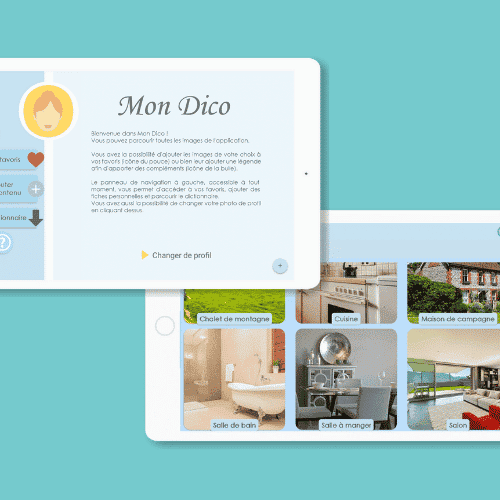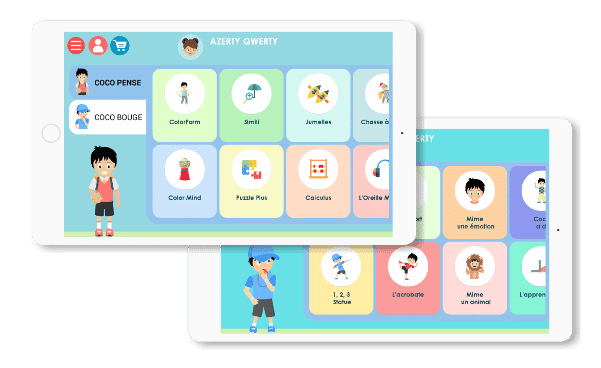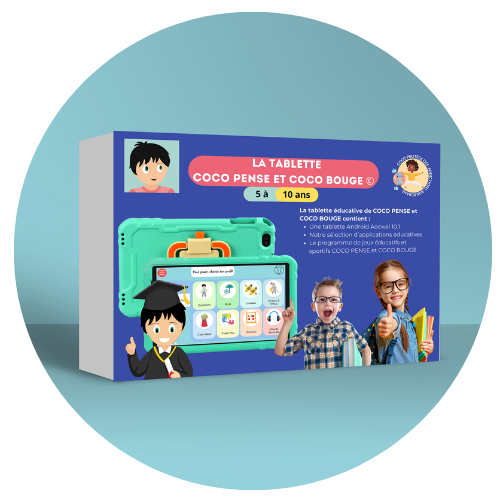Communication with a child with autism
Communication is the act of exchanging a message, mostly between two people, vocally or not, and it starts at the very beginning of life. In the early stages of communication, we may cry or babble to calm ourselves or to respond to something unpleasant or exciting.
For many children with autism, communication and speech may develop differently or more slowly. Most also have difficulty understanding that communication is used in tandem with others and is used to convey a message. In addition, some children with Autism Spectrum Disorder (ASD) may develop language, but have difficulty understanding how to use communication correctly and therefore must specifically learn the meaning of their words and actions. How children learn to communicate affects other areas of development, including learning and behavior. There are ways to foster communication with a child with autism while promoting language development.
1. The importance of an adapted education
Autism is a disorder that affects 2 out of 100 babies in France. We speak of Autism Spectrum Disorders, also known as “ASD”. According to other statistics, only 20% of children with autism are enrolled in school. This low enrollment rate is due to the learning difficulties of children with autism. They are caused by autism disorders. These learning difficulties affect, for example, reading, writing and counting skills. This is why it is important for parents to use techniques that are adapted to the needs of their autistic child.
Proper education is also a necessity in terms of socializing your autistic child. In fact, the autistic individual tends to live in solitude. Because autism will impair his ability to communicate and interact with other children his age. How to make him more sociable? Of course, it is by setting up an adapted to its situation of handicap.
There are also efforts to be made in the area of feeding the autistic child. Children with disabilities are not immune to eating disorders. The parent must educate the child to adapt in order to guarantee good health and harmonious development.
With these few reasons just mentioned, you now understand why it is essential to use customized education for children with autism.
Determine your child’s level of communication
It is important to know your child’s current level of communication and to move slowly towards his or her ultimate goal. Moving too fast and skipping steps can create frustration, hopelessness or undesirable behavior.
2. Stress management
Too much stress negatively affects the behavior of the child with autism. Not to mention the adverse effects on his health. What to do?
Adopt the right reflexes
Today, stressful situations have become plural. You can help your child with autism to cope in the best way possible with each circumstance. For example, going to a hospital or doctor’s office can be stressful. The child with autism can be helped to cope with the visit with less stress by taking an initial tour of the premises before the day indicated.
There are also stress management techniques. In this category, we distinguish the relaxation methods.
Alleviating stress with a dog
Since the beginning of time, pets have proven their usefulness to human beings. According to a study conducted at the University of Missouri, the dog is an ideal companion to limit the stress of the autistic child. The researchers found that toddlers living with an animal seemed less prone to stress than others.
Hence the interest for parents to adopt a dog or a cat in order to calm the family atmosphere.
3. The means of communication
Find out how you can facilitate fellowship with a child with autism.
Communicating with images and games
Images and games are good communication tools. However, your approach should be based on the interests of the child with autism spectrum disorder. Identify his or her interests so that communication is easier. Pictures or illustrations are often more explicit than words. You can draw some activities to do with the child.
As for games, it is possible to download applications from the Internet. The designers offer attractive prices.
Communicating with gestures
Children can learn to reach or point to what they want. Children can also learn that you are often drawn to this product or activity by being drawn to what they want. These gestures can be taught individually or as a chain of behaviors to promote persistence of communicative intent.
Calling on a specialized health professional
In this case, the parent can refer to a speech therapist or an occupational therapist. These specialists help with communication through adapted alternative tools. A speech-language pathologist is a professional who treats communication disorders. Occupational therapists are involved in the treatment of individuals with motor and psychomotor disorders. Don’t hesitate to schedule a consultation with these speech and occupational therapy specialists.
4. Learn to deal with aggressive behavior
A child may also show aggression in a crisis. We will do everything to reduce his aggressiveness. Proceed gently, without raising your voice.
Help him reduce his aggression
As a parent, you can take gentle steps to reduce your child’s aggression. Therefore, try to identify the causes of his anger when the crisis occurs. For example, we can intervene with a positive gesture. Stay calm without getting carried away. Why not set up a quiet shelter for the child? He will be able to take refuge there to make his anger pass.
Talk to the child as you can encourage responsible behavior. Finally, sometimes ignoring a whim can bring good results.
Educating the autistic child without shouting
Education without yelling works better, according to experts. But it’s not that easy to implement. The parent and the autistic child will eventually exhaust themselves with separate screams. A parent once stated, “I’m looking to yell louder than my child.”
Of course, it is a waste of time to try to control your voice at all costs. Preferably, isolate him in a quiet space with the intention of calming him down. His mood swings can be explained. So seek to understand what is really going on.
5. Learn to cope with routine
Understand that routine is useful for both children with autism and adults. It can be about going out, meeting new people, visiting, etc. In some cases, the routines induce a problem. It’s up to you to take the right steps to deal with it. Work to establish a systematic routine that you can follow even when you’re rushed off your feet at the office. However, monitor the child so that he or she can adapt to the changes. There are applications that can help you with this. Think about it!
Some tips to help communication
with a child with autism
It is important to keep in mind that children with autism need time and support in a majority of the tasks they are required to perform. That’s why you can help them with small gestures and attentions that you put in place daily.
Keep it simple
Using overly complicated language or using too many words can make understanding and learning more difficult. Start a little higher than your child is currently able to do and slowly work up from there.
Use the child’s interests
Motivation is an essential part of communication and can be helpful in teaching your child to ask for something, ask questions or make comments.
Provide the opportunity and time to communicate or respond
Children learn to communicate when they need something. Thus, it is important to successfully create opportunities for them to request items or activities by placing them within sight, but out of reach. Give portions of requested food or pieces of toys to create opportunities for repetition and give them time to formulate a response.
Testing digital tools
Children with autism can learn communication skills through the use of technology, including an alternative communication system such as the “My Dico” tablet app. This application will help them to improve their communication skills, to learn to indicate their wants and needs, through explicit words and pictures. You can personalize the library by taking pictures of all the useful elements to communicate: it can be the members of the family, the objects of the everyday life, the rooms of the house…
The COCO THINKS and COCO MOVES apps and My Dictionary can also be a great way to communicate with your child, while participating in their learning. The games are adapted, with adapted difficulties. Often, through play, communication is facilitated. We forget the problems of everyday life, and we share a good time.

The My Dico application
My Dico is a tablet application that allows you to easily communicate with your beneficiaries.
Indeed, Mon Dico allows you to communicate using images of daily life in order to understand their needs and desires: what they want to do, what they want to eat, wear, etc…
This is a very useful tool with autistic children who will enrich their vocabulary and mental images by associating an image with a particular need.
Discover the COCO THINKS and COCO MOVES app
The COCO THINKS and COCO MOVES application contains more than 30 educational games to work on French, math, logic, memory or attention.
In addition, the application imposes a sports break every 15 minutes of screen time to teach measured screen use.
Much smarter than a parental control!

Other articles that might interest you:
Using Technology to Enhance Communication in Autism Speech Therapy
Autism Spectrum Disorder (ASD) presents unique challenges in communication, making speech therapy an essential...
Effective Autism Behavior Therapy: Improving Outcomes
Autism is a complex neurodevelopmental disorder that affects individuals in various ways. It is characterized by...
Autism Therapy at Home: Effective Strategies
Autism Spectrum Disorder (ASD) is a neurodevelopmental disorder that affects individuals in various ways. It is...






